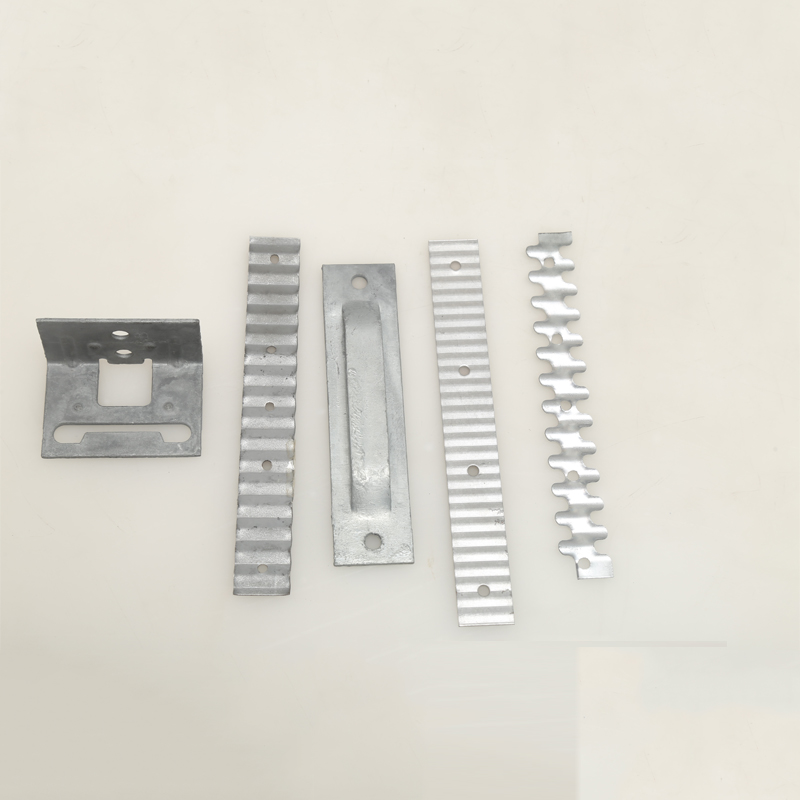
- Mobile Phone
- +8613931874955
- sales@cntcmetal.com
Dowel Bar Sleeve Innovations for Enhanced Concrete Joint Performance and Durability
The Importance of Dowel Bar Sleeves in Concrete Structures
In the realm of civil engineering and construction, the durability and performance of concrete structures are paramount. One of the key components that contribute to the structural integrity of concrete pavements and slabs is the dowel bar sleeve. This seemingly simple accessory plays a crucial role in load transfer, crack control, and overall structural performance. Understanding the function and benefits of dowel bar sleeves can help engineers and construction professionals enhance the longevity and reliability of their concrete projects.
What are Dowel Bar Sleeves?
Dowel bars are steel rods embedded in concrete slabs at construction joints to facilitate load transfer between adjacent slabs. However, without proper insulation, these bars can cause issues such as corrosion, vibration, and uneven load distribution. This is where dowel bar sleeves come into play. A dowel bar sleeve is a cylindrical casing designed to encase the dowel bar, allowing it to move freely within the sleeve while being anchored to the surrounding concrete slabs.
Functionality and Benefits
The primary purpose of dowel bar sleeves is to allow for horizontal movement between slabs due to temperature fluctuations, shrinkage, and other environmental factors. When concrete cures, it shrinks, and the dowel bars need the flexibility to adjust without causing cracking or misalignment. By providing a smooth surface for the dowel bars to slide, sleeves help maintain the integrity of the pavement structures.
1. Enhanced Load Transfer Dowel bar sleeves facilitate effective load transfer between slabs, which is critical for the performance of highways and pavements. By allowing for lateral movement, they prevent stress concentration at the joint, reducing the likelihood of slab cracking.
dowel bar slevee

2. Corrosion Resistance Concrete is naturally alkaline, which protects steel from corrosion. However, the embedded dowel bars can still corrode due to moisture ingress and other factors. Dowel bar sleeves provide a barrier that helps protect the dowel bars from corrosive agents, extending their lifespan significantly.
3. Simplified Installation and Maintenance Implementing dowel bar sleeves during construction simplifies the installation process. They allow for accurate positioning of dowel bars, ensuring proper alignment and spacing. Furthermore, should maintenance be required, dowel sleeve systems make access simpler, thus reducing repair time and costs.
4. Improved Aesthetics With the application of dowel sleeves, the alignment of slabs is more precisely controlled, leading to an aesthetically pleasing surface. This is particularly important for high-traffic areas where visual appearance can impact public perception and satisfaction.
Conclusion
Dowel bar sleeves are essential components in concrete construction that contribute to the performance and longevity of pavements and slabs. By allowing controlled movement, enhancing load transfer, providing protection against corrosion, and easing installation and maintenance, these sleeves offer significant advantages that can enhance the overall durability and functionality of concrete structures.
For engineers and construction professionals, integrating dowel bar sleeves into their projects is not merely an option but a necessity for achieving optimal results in concrete construction. As the industry continues to evolve, the importance of innovative solutions like dowel bar sleeves cannot be overstated. Embracing these advancements will undoubtedly contribute to the development of more resilient and sustainable infrastructure, ready to withstand the test of time and environmental challenges.
share:
-
Your Source for Concrete Wall Ties and Masonry AccessoriesNewsJul.10,2025
-
Unlocking the Power of Iron Wire for Every ProjectNewsJul.10,2025
-
Explore Advanced Chain Wire and Stainless Steel Mesh FencingNewsJul.10,2025
-
Discover the Benefits of Annealed Wire ProductsNewsJul.10,2025
-
Discover China Stainless Steel Wire Mesh SolutionsNewsJul.10,2025
-
Build with Confidence Using High-Performance Masonry AccessoriesNewsJul.10,2025
-
Why Sacrificial Formwork Is Redefining Underground ConstructionNewsJun.06,2025



















